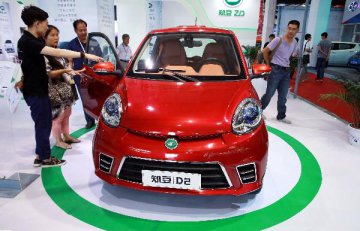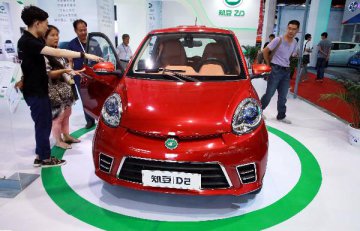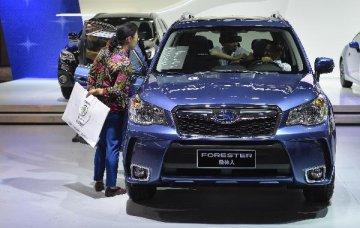
Spring is pretty much in the air for China's new energy car industry. In the first ten months of 2015, new energy vehicle production tripled year on year to reach about 206,900 vehicles, while overall auto production in China was weak.
China produced 50,700 new energy vehicles in October alone, up 8-fold from the same month last year. Earlier this month, China's largest automaker by sales SAIC Motor (600104.SH) announced a plan to raise up to 15 billion yuan via private placement to invest in new energy vehicle and telematics projects.
Leading new energy vehicle and battery maker BYD (002594.SZ; 01211.HK) unveiled a similar plan in June, saying it would raise up to 15 billion yuan to expand production capacity for Li-on batteries and invest in NEV research and development.
BYD said it would release more new energy vehicle models one after another in the future. These models include plug-in SUV Tang, mini plug-in SUV Song and Yuan. The company estimated that its sales volume of new energy vehicles would grow fast with the increase of new energy vehicle models and new battery output capacity. Anhui Jianghuai Automobile Co. (JAC, 600418.SH) has released a plan to have new energy autos take up more than 30 percent of its total production and sales by 2025.
The automaker said it would continue to pursue innovation-driven development and sharpen its skills in new energy auto manufacturing, especially in pure electric and hybrid auto segments. Chongqing Changan Automobile Co., Ltd. (000625.SZ) aims to increase its accumulated sales of new energy vehicles to some 400,000 units by 2020, and 2 million units by 2025, according to the company's 10-year strategy for developing new energy vehicles.
Targeting low-end electric car segment, Geely Automobile Holdings (00175.HK)'s ZD program plans to build a new energy car production base in east China's Zhejiang Province, involving an investment of 30 billion yuan.
Foreign capital-backed auto firms have also stepped up their efforts in the new energy car business. FAW Toyota and GAC Toyota recently launched dual-engine versions of the Corolla and Levin model. The two joint ventures also adjusted down the prices of their hybrid models in order to win a bigger market share.
While automakers are tapping the new energy auto market at full throttle, strong government support is considered a crucial element behind the market boom. According to a statement jointly issued by the Ministry of Finance and three other ministries, China will continue to subsidize new energy vehicles in the coming five years (2016-2020).
Moreover, the average oil consumption of passenger vehicles is expected to fall to 5.0 liters per 100 kilometers by 2020, according to a revised set of rules published by the Ministry of Industry and Information Technology on January 5.
The new requirements are never easy to meet simply through conventional power technologies and that makes developing new energy vehicles a task all players need to cope with, analysts say.
Focus on 13th Five-Year Plan > Market focus






















Latest comments